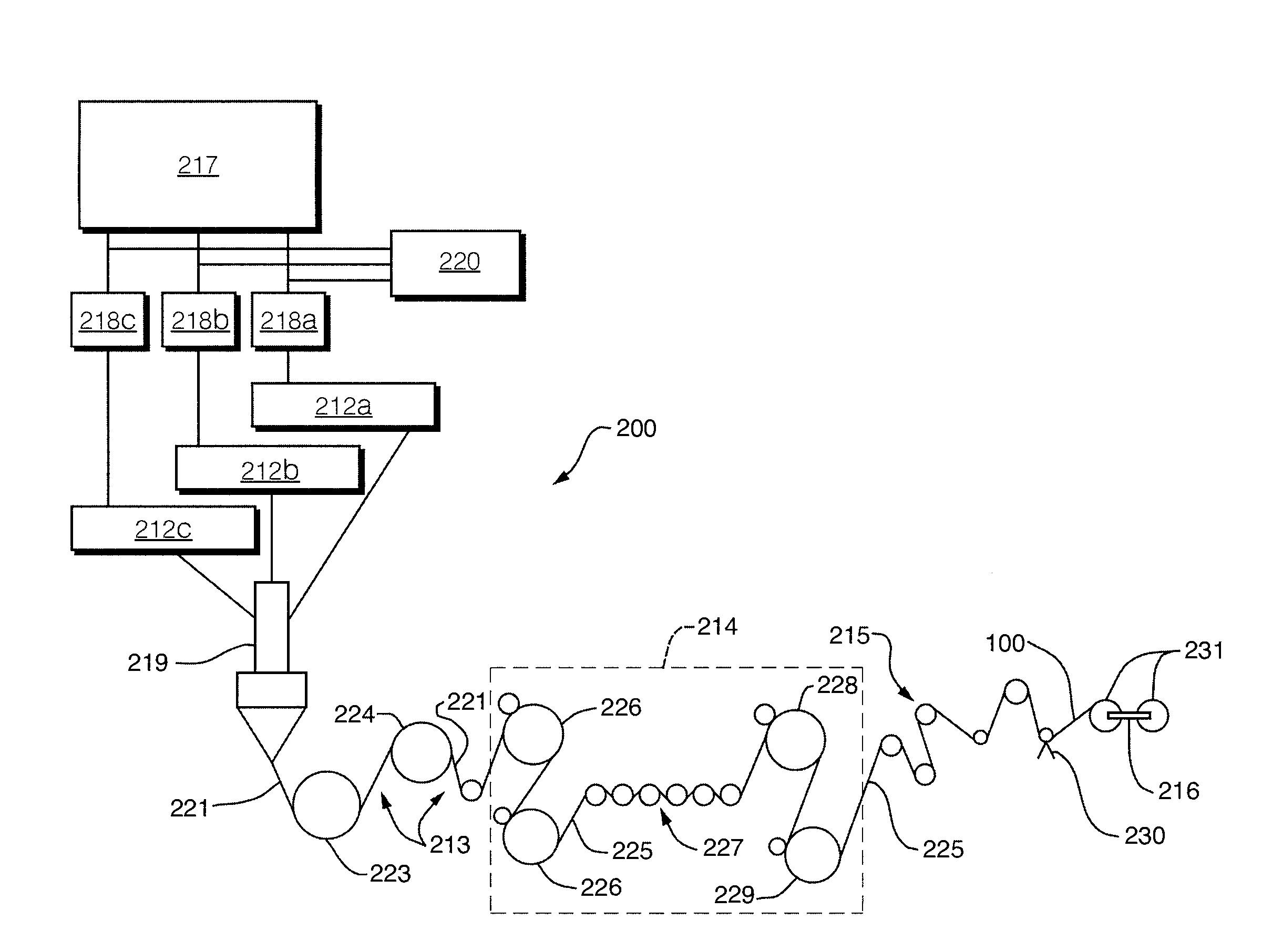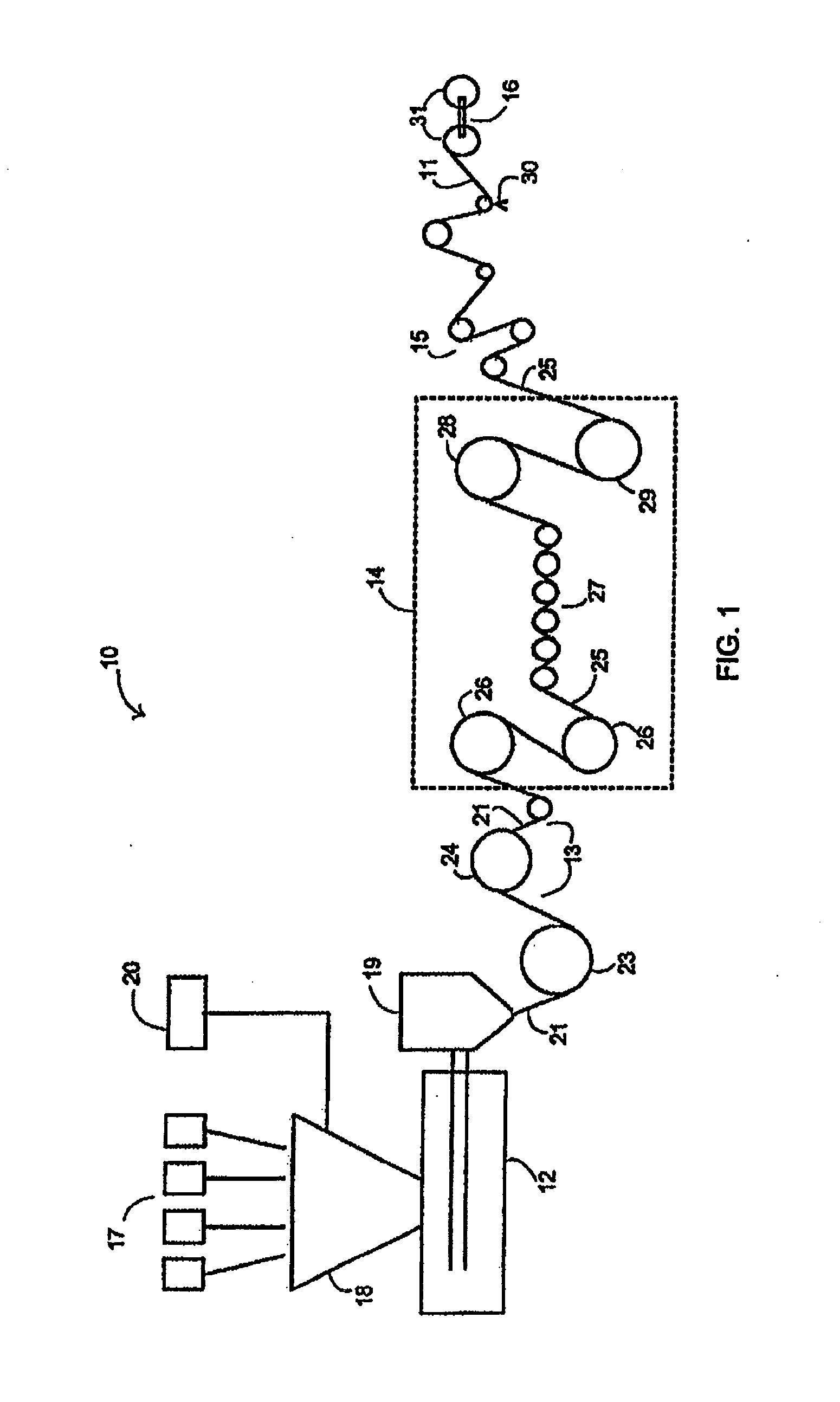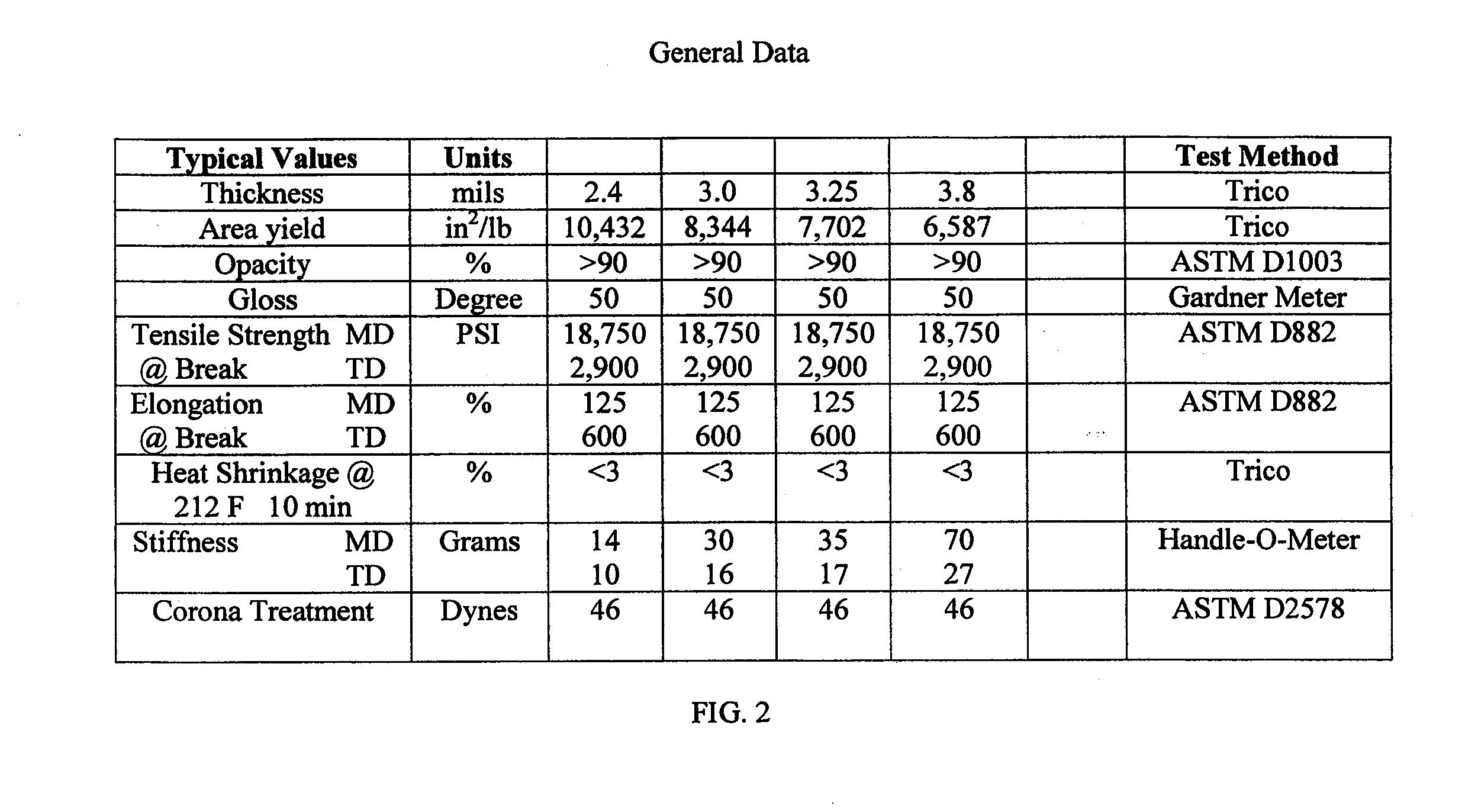Method of reducing film density and related product
a film density and film technology, applied in the field of films or sheets, can solve the problems of component having an adverse impact on the desired characteristic produced, affecting the production of desired characteristics, and affecting the use of compositions in a wide range of applications, so as to achieve minimal shrinkage, increase the crystallization rate of polypropylene, and high tensile strength
- Summary
- Abstract
- Description
- Claims
- Application Information
AI Technical Summary
Benefits of technology
Problems solved by technology
Method used
Image
Examples
Embodiment Construction
[0023]FIG. 1 shows a simplified diagrammatic view of a film fabrication system 10 used in the novel fabrication process of the present invention to create a novel microvoided (reduced density) film stock 11 having reduced density while maintaining structural integrity and the capability to be used in a wide range of applications. Primary components of the system 10 include an extruder 12, a roll unit 13, a film-orientation unit 14, a corona treatment unit 15, and an end-product winder 16. The extruder 12 is used to combine a primary structural base material, preferably a polypropylene homopolymer or a polypropylene copolymer, with a microvoid forming additive, and optionally one or more other additives selected to establish in the final film product suitable characteristics of interest. The structural base material may be nucleated or non-nucleated. A high impact polymeric material, such as Ti-4015 high impact polypropylene-polyethylene copolymer available from Sunoco, Inc. of Phila...
PUM
| Property | Measurement | Unit |
|---|---|---|
| Fraction | aaaaa | aaaaa |
| Percent by mass | aaaaa | aaaaa |
| Percent by mass | aaaaa | aaaaa |
Abstract
Description
Claims
Application Information
 Login to view more
Login to view more - R&D Engineer
- R&D Manager
- IP Professional
- Industry Leading Data Capabilities
- Powerful AI technology
- Patent DNA Extraction
Browse by: Latest US Patents, China's latest patents, Technical Efficacy Thesaurus, Application Domain, Technology Topic.
© 2024 PatSnap. All rights reserved.Legal|Privacy policy|Modern Slavery Act Transparency Statement|Sitemap



